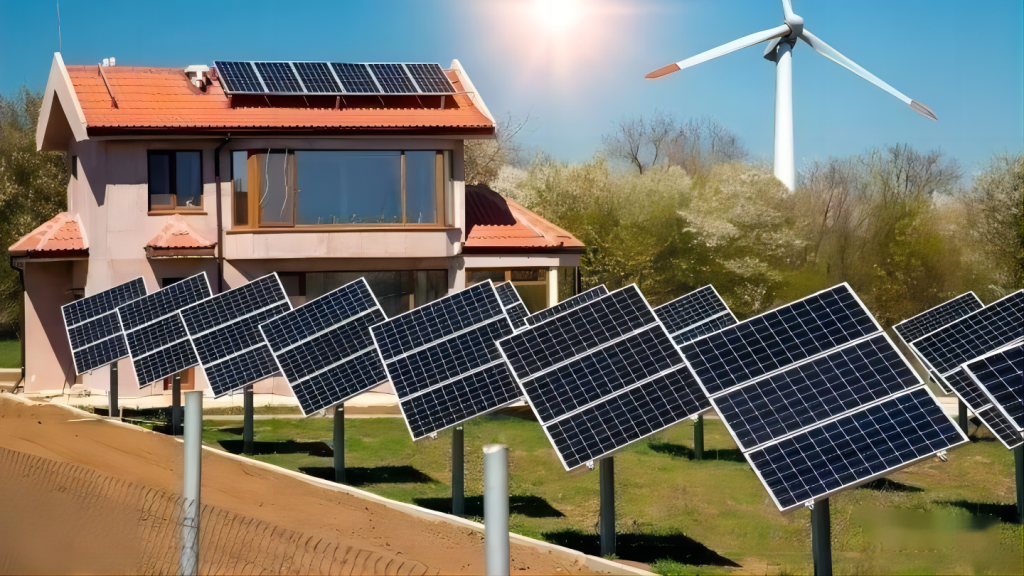
Greece is rich in light resources and is the European country with the highest proportion of photovoltaic power generation. Greece has actively promoted photovoltaic technology in recent years, and photovoltaic power generation has become an important driving force for Greece to accelerate the development of new energy power systems.
A data analysis released by the Greek Photovoltaic Enterprises Association (Helapco) in February showed that Greece's new photovoltaic installed capacity will reach 1.59 GW in 2023, setting an annual record and contributing to 74% of this year's new new energy sources. Currently, Greece's national photovoltaic installed capacity is 7.1 GW, which can meet 18.4% of the country's electricity demand. Photovoltaic power generation has become an important driving force for Greece to accelerate the development of new energy power systems.
Greece is rich in light resources and is the European country with the highest proportion of photovoltaic power generation. Last year, the country’s proportion of photovoltaic power generation in domestic power generation (18.4%) ranked first in Europe, more than twice the EU average (8.6%) and more than three times the global average (5.4%). As of the end of 2023, a total of 72,500 photovoltaic power generation devices of various specifications and technologies have been installed in Greece, and this number is still growing rapidly. Photovoltaics are also the cheapest power generation technology, with the cost of photovoltaic modules falling by 90% since 2009. Thanks to the promotion of photovoltaic technology, the country has avoided 5.7 million tons of carbon dioxide emissions in 2023, which is equivalent to the total amount of carbon dioxide emitted by 4.6 million cars driving an average of 10,000 kilometers per year. The environmental benefits it generates are equivalent to 90 million plants. Deciduous trees grow for 10 years.
The rapid development of photovoltaic technology cannot be separated from the strong support of the government. Greece has actively promoted photovoltaic technology in recent years. Last year alone, the country's investment in new photovoltaic projects reached 1.11 billion euros, an 11% increase from 2022. This investment will help Greece add 15,000 jobs in 2023. In 2022, Greece will launch the largest solar power plant construction project in the Eastern Mediterranean, with photovoltaic facilities worth up to 130 million euros. This 205-megawatt power plant will generate enough electricity to power 75,000 households and will reduce more than 300,000 households per year. tons of carbon dioxide emissions. Greek Prime Minister Kyriakos Mitsotakis said at the launch of the new facility that "Greece will become a leader in renewable energy."
Greece is also actively promoting the introduction of solar energy into ordinary people's homes. Starting in May 2023, the Greek Ministry of Energy will launch a "rooftop photovoltaic" subsidy project. Qualified urban residents or farmers can apply online, with a total subsidy amount of 238 million euros. The purpose of this subsidy is to fully cover the battery cost of the electricity consumer and the installation cost of the photovoltaic system, so that urban residents or farmers can have the autonomy to use electricity and produce and store their own green energy. Applicants to the program can place photovoltaic installations on the roof or roof of a building (including canopies, terraces, facades, awnings and pergolas), in ancillary areas of the building, on agricultural land or on the ground.
Greek photovoltaic production companies are also actively promoting technological innovation. Greek solar module manufacturing company Brite Solar is currently developing photovoltaic greenhouses and bifacial panels that can be used in agriculture. This method of combining new glass coating materials with silicon-based solar cells can further optimize photovoltaic technology for open-air agriculture. On the one hand, it can generate efficient power generation and energy storage, and on the other hand, it can protect crops from adverse weather conditions. , and reduce water evaporation.
Greece has also received assistance from the European Union in promoting photovoltaic projects. In April 2024, the EU approved €1 billion in state aid to Greece to support the construction of solar projects with a cumulative capacity of 813 MW and supporting energy storage facilities. The funds will be allocated to two projects: The Faethon project will build two photovoltaic plants with a capacity of 252 MW each, along with integrated molten salt energy storage and an ultra-high voltage substation. The project is designed to provide power regulation. Peak ancillary services; the Seli project will build a 309 MW photovoltaic power station and a lithium-ion battery energy storage system, aiming to optimize power generation and ensure grid stability.
In the revised National Energy and Climate Plan (NECP) to be published in 2023, Greece proposes to increase its cumulative renewable energy capacity to 23.5 GW by 2030 and 71.7 GW by 2050, with solar energy contributing the largest share The installed capacity will reach 14.1 GW by 2030 and 34.5 GW by 2050. Judging from the current development speed of photovoltaics in Greece, the speed of realizing renewable energy power generation has greatly exceeded the expected goal.

